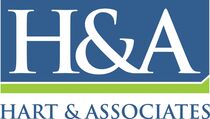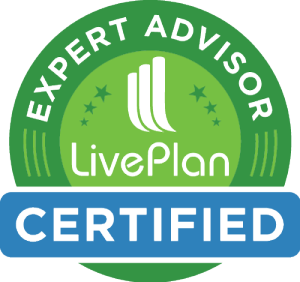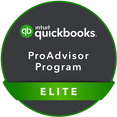(This general information should not be acted upon without first determining its application to your specific situation. For further details on any article, please contact us.)
The balance sheet reveals bookkeeping mistakes. Among the potential errors are incorrect inventory, overstated customer invoices, and understated vendor bills.
Balance sheets are snapshots of account balances on given dates, such as month-end or year-end. The three sections are: (1) what you own (assets), (2) what you owe (liabilities), and (3) the difference between these two—which is your business net worth (equity). Let’s have a quick review:
What you learn could make all the difference in the success of your company!
Created by Palo Alto Software, LivePlan helps small business owners easily develop budgets and forecasts, create goals for their business, and then track their progress on a dynamic dashboard that syncs with popular accounting systems. LivePlan imports accounting data from QuickBooks and presents the information in a dashboard view that shows business owners where their financials stand compared to their original plan and previously set goals.
“Accounting data alone is not sufficient enough to run a business,” said Sabrina Parsons, CEO of Palo Alto Software. “Business owners must also track how those actual numbers compare to their budget and forecast and their historical performance. LivePlan gives small business owners access to this information - in an easy to view format - without having to ask their bookkeeper or accountant to run multiple reports. With this, accountants are becoming strategic advisors, and helping small businesses in areas beyond taxes, bookkeeping, and audits.” About Hart & Associates At Hart & Associates, we are committed to providing the highest level of service to our clients. In support of this focus, continuing education is part of our company culture. Our goal is to meet or exceed the current continuing education requirements for CPAs in the State of California, as well as to keep up with new offerings that support the growth and success of our clients. About Palo Alto Software, Inc. Palo Alto Software, Inc., makers of the #1 selling business planning software in the world, develops and publishes tools, products, and content to help small and midsized businesses pitch, plan, manage, and grow their ventures. LivePlan, the company’s flagship product, is a SaaS (software as a service) solution for business planning and financial management. Palo Alto Software has been the market leader in its category for over 15 years, has served well over 2 million entrepreneurs, and has customers in 180 countries. It was founded in 1988 by business planning expert Tim Berry. Sabrina Parsons has been the company’s CEO since 2007. Parsons successfully expanded its service offering into the cloud with LivePlan. Palo Alto Software is a privately-owned corporation based in Eugene, Oregon.
Many charitable organizations are seeking your aid to address genuine hardships. Avoid the schemes of unethical hucksters and your donations will provide help where it’s needed most.
It's that time of the year again! Beginning this month, you can sign up for a new 2016 health insurance policy on the health insurance Marketplace. You can also change or renew the policy you purchased during the last enrollment period. Even if your current policy has an automatic renewal feature, you’ll want to verify that you are still eligible for the federal premium tax credit.
What if you didn’t sign up last winter and didn’t have health insurance coverage in 2015? You may owe a penalty on your 2015 federal income tax return. The penalty for 2015 is the greater of $325 per adult and $162.50 per child under 18 (up to a maximum per-family penalty of $975) or 2% of your modified adjusted gross income (with a maximum of the national average premium for a Bronze plan). For additional information from www.Healthcare.gov, check out this article: 5 Tips About the Health Insurance Marketplace.
Image courtesy of cooldesign at FreeDigitalPhotos.net
|
AuthorSuccessfully meeting the challenges inherent to new and smaller businesses provides me with a special type of satisfaction. Archives
February 2022
Categories
All
|






 RSS Feed
RSS Feed







